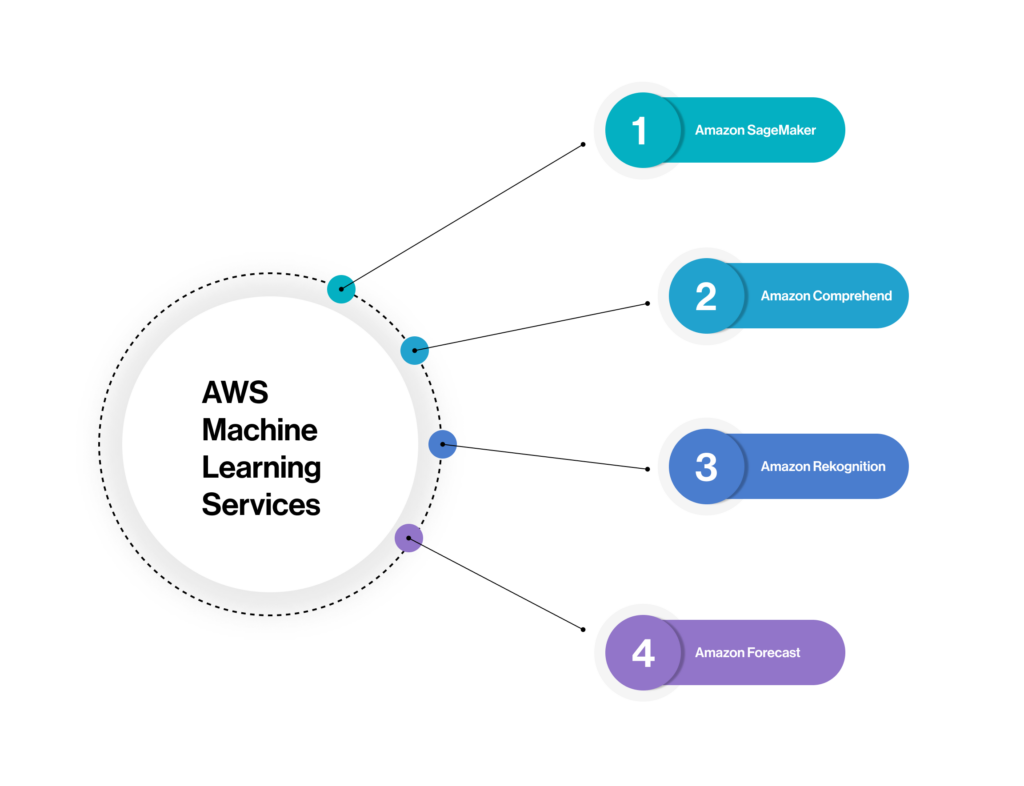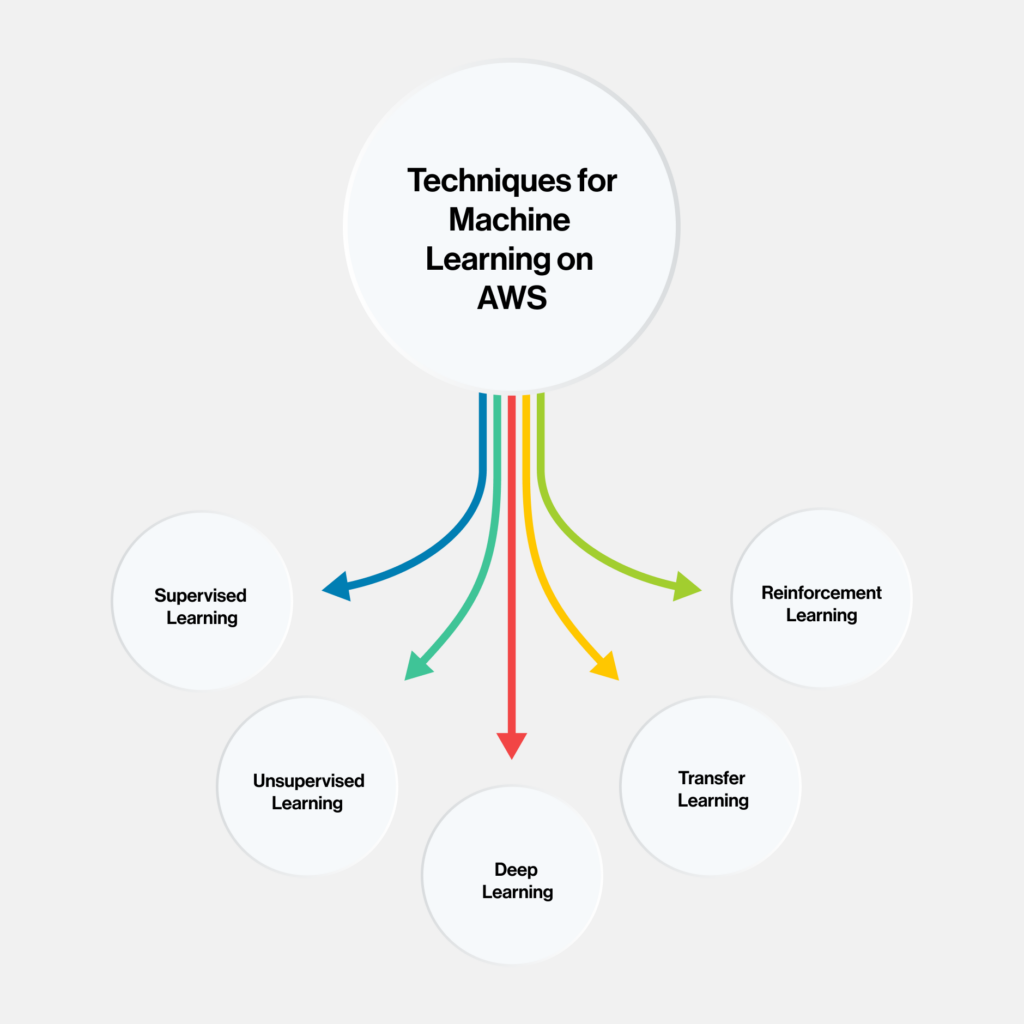
In recent years, machine learning has emerged as a powerful technology that can revolutionise industries by enabling intelligent decision-making and automation. Among the various platforms available for machine learning, Amazon Web Services (AWS) stands out as a leading provider, offering a wide range of tools and services for building, training, and deploying machine learning models. In this blog, we will delve into the techniques and applications of AWS machine learning, exploring how it empowers businesses to leverage the potential of artificial intelligence.
Overview of AWS Machine Learning Services
AWS provides a comprehensive suite of machine learning services that cater to different stages of the machine learning workflow. Some key services include:

1. Amazon SageMaker: SageMaker is a fully managed service that simplifies the process of building, training, and deploying machine learning models. It offers a wide range of built-in algorithms, tools for data labeling and annotation, and the flexibility to bring your own algorithms.
2. Amazon Comprehend: Comprehend is a natural language processing (NLP) service that helps extract insights and relationships from unstructured text. It provides pre-trained models for tasks such as sentiment analysis, entity recognition, and topic modeling.
3. Amazon Rekognition: Rekognition is a deep learning-based image and video analysis service. It enables you to analyze and extract information from images and videos, including facial analysis, object recognition, and content moderation.
4.Amazon Forecast: Forecast is a fully managed service for time-series forecasting. It utilizes machine learning algorithms to generate accurate forecasts, helping businesses optimize inventory management, demand planning, and resource allocation.
Techniques for Machine Learning on AWS:

1. Supervised Learning: AWS offers a range of supervised learning algorithms through SageMaker, such as linear regression, support vector machines, and random forests. These algorithms are trained using labeled datasets and can be used for tasks like regression, classification, and recommendation systems.
2. Unsupervised Learning: For unsupervised learning tasks, AWS provides algorithms like k-means clustering and principal component analysis (PCA). These techniques are useful for exploratory data analysis, customer segmentation, and anomaly detection.
3. Deep Learning: Deep learning models, which are highly effective in handling complex patterns and large datasets, can be built and trained using SageMaker. AWS offers popular deep learning frameworks like TensorFlow and PyTorch, along with specialized services like Amazon Elastic Inference for cost-efficient inference.
4. Transfer Learning: Transfer learning allows leveraging pre-trained models on large-scale datasets to solve specific tasks with limited data. AWS facilitates transfer learning through SageMaker’s built-in algorithms and enables fine-tuning on custom datasets.
5. Reinforcement Learning: Although AWS does not provide a dedicated service for reinforcement learning, it offers infrastructure and services like Amazon EC2, S3, and SageMaker that can be used to implement reinforcement learning algorithms.
Applications of AWS Machine Learning
1. Natural Language Processing (NLP): AWS services like Comprehend and Amazon Lex enable developers to build applications that can understand and analyze text data. NLP models can be employed for sentiment analysis, language translation, chatbots, and content categorization.
2. Computer Vision: With Amazon Rekognition, businesses can incorporate computer vision capabilities into their applications. This opens up possibilities for image recognition, face detection, content moderation, and video analysis, leading to enhanced user experiences and improved security measures.
3. Personalization and Recommendation Systems: AWS machine learning services enable businesses to build recommendation engines that offer personalized experiences to their customers. By leveraging algorithms like collaborative filtering and deep learning, organizations can provide tailored recommendations for products, content, and services.
4. Predictive Analytics: Amazon Forecast enables accurate time-series forecasting, empowering businesses to make data-driven decisions in areas such as demand forecasting, inventory optimization, and resource planning. This helps improve operational efficiency and customer satisfaction.
5. Fraud Detection and Anomaly Detection: Machine learning models built on AWS can be utilized for fraud detection and anomaly detection in various domains, including finance, cybersecurity, and manufacturing. By analyzing patterns and identifying outliers, businesses can proactively mitigate risks and minimize losses.
Conclusion
AWS machine learning services offer an extensive set of tools and capabilities that empower businesses to leverage the potential of artificial intelligence.
With a range of techniques available, from supervised and unsupervised learning to deep learning and reinforcement learning, organizations can tackle a variety of challenges and unlock valuable insights from their data.
From natural language processing and computer vision to recommendation systems and predictive analytics, the applications of AWS machine learning span across diverse industries, driving innovation and efficiency.
As the field of machine learning continues to evolve, AWS remains at the forefront, providing businesses with the tools they need to harness the power of AI and transform their operations.